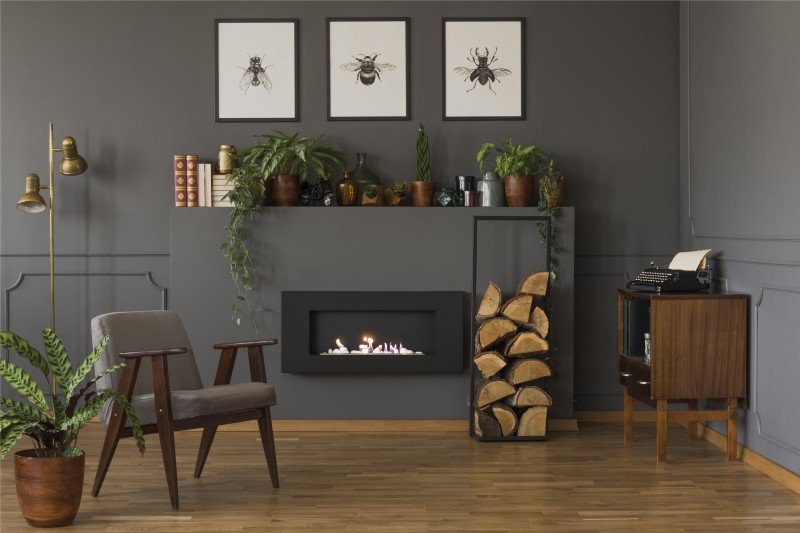The Charm and Functionality of Fireplaces: A Comprehensive Guide
Fireplaces have long been a central feature in homes, symbolizing heat, friendship, and comfort. They can be found in different styles, materials, and fuel types, accommodating the choices and requirements of diverse property owners. Fireplace Online looks into the diverse world of fireplaces, exploring their history, types, setup factors to consider, and maintenance tips, while providing FAQs to attend to typical questions.
A Brief History of Fireplaces
Historically, fireplaces worked as the foundation for cooking and heating homes. In ancient times, an open hearth was often put in the center of a dwelling. Over Fireplace Online , architectural advancements facilitated the development of more advanced styles, evolving from easy stone structures to elaborate mantels that administer over modern living spaces.
Secret Historical Milestones:
- Ancient Times: Open fires in caves and primitive huts for heat and cooking.
- Middle Ages: Large, commonly centralized chimney structures in great halls of castles.
- Renaissance: Decorative mantels and designs gain popularity, with the fireplace ending up being a symbol of wealth and status.
- Industrial Revolution: Advancements in products and producing permit for a wider range of fireplace styles.
- Modern Era: Gas and electric fireplaces end up being commonplace, permitting increased benefit and safety.
Kinds of Fireplaces
Today, many types of fireplaces are available, each with its unique qualities. Below is a breakdown of the most common types:
| Fireplace Type | Description | Pros | Cons |
|---|---|---|---|
| Wood-Burning | Traditional fireplaces fueled by wood. | Genuine experience, heat output. | Labor-intensive, requires correct venting/maintenance. |
| Gas | Fireplaces that utilize natural gas or gas. | Easy to use and maintain. | Less ambiance compared to wood. |
| Electric | Uses electrical power to produce heat and flames. | Safe, no venting needed. | Minimal heat output, greater energy costs. |
| Bioethanol | Uses bioethanol fuel, producing tidy flames. | Eco-friendly, portable. | Needs regular refueling. |
| Pellet | Uses compressed wood pellets as fuel. | Tidy burning, sustainable. | Requires power for operation. |
Additional Considerations
When choosing a fireplace, it is vital to consider factors such as:
- Fuel Availability: Consider what fuels are readily accessible in your area.
- Space and Aesthetics: The size of your living location and your style preferences need to assist your choice.
- Building Regulations: Always seek advice from local policies to ensure compliance and safety.
Installation Considerations
Setting up a fireplace involves more than merely putting a structure in your house. Extensive preparation, expert input, and adherence to security codes are paramount. Here are some important actions:
- Planning: Consider the size and kind of fireplace, where it will be placed, and its designated usage.
- Consultation: Hire a certified professional to examine your home and ensure appropriate installation.
- Permits: Obtain any necessary structure authorizations from regional authorities.
- Materials: Select suitable materials for the fireplace and surrounding area. Ensure they are fire-resistant and developed for your fuel type.
Maintenance Tips for Fireplaces
Regular upkeep ensures your fireplace runs securely and efficiently. Here are essential maintenance ideas classified by fireplace type:
Wood-Burning Fireplaces
- Chimney Cleaning: Have your chimney cleaned up each year to prevent creosote accumulation.
- Examine for Damage: Check for fractures and damage to the firebox and chimney structure.
- Fire wood Storage: Store firewood far from the house to avoid bug infestations.
Gas Fireplaces
- Log Inspection: Regularly examine ceramic logs for fractures and change if necessary.
- Vent Cleaning: Ensure that vents are free from obstructions.
- Pilot Light Check: Test pilot lights and ignition systems regularly.
Electric Fireplaces
- Cord Inspection: Frequently check electrical cords for fraying or use.
- Tidy Surfaces: Wipe down surface areas regularly to get rid of dust and debris.
- Smoke Detectors: Ensure smoke alarm in the vicinity are practical.
Bioethanol and Pellet Fireplaces
- Fuel Storage: Store fuels in a cool, dry place away from direct sunshine.
- Regular Refueling: Monitor fuel levels and refuel as required.
- Ventilation: Ensure appropriate ventilation when utilizing these fireplaces.
Frequently asked questions About Fireplaces
Q1: Do I require an authorization to set up a fireplace?
Yes, many municipalities require authorizations for fireplace installations to make sure security and compliance with regional building codes.
Q2: How often should I clean my chimney?
It is advised to have your chimney cleaned a minimum of as soon as a year, especially if you use your fireplace frequently.
Q3: Can I transform a wood-burning fireplace to gas?
Yes, numerous homeowners convert wood-burning fireplaces to gas for benefit, but seeking advice from a professional is advisable to make sure a correct conversion.
Q4: Do electric fireplaces produce heat?
Yes, electric fireplaces can produce heat; however, their main function is frequently for atmosphere, making them a suitable option for those who desire a fire appearance without extensive heating.
Q5: Are bioethanol fireplaces safe?
Bioethanol fireplaces are typically safe when utilized correctly; nevertheless, they require proper ventilation, and users must follow all manufacturer standards.
Fireplaces not only include visual interest homes however likewise provide practical heating services. With numerous types, styles, and maintenance requirements, homeowners can make informed options that best match their needs and way of lives. Whether opting for the appeal of a wood-burning fireplace or the convenience of a gas model, a fireplace can considerably enhance a living space's convenience and atmosphere. As the hearth stays a focal point in homes, it continues to foster heat, discussion, and connections amongst friends and family.

